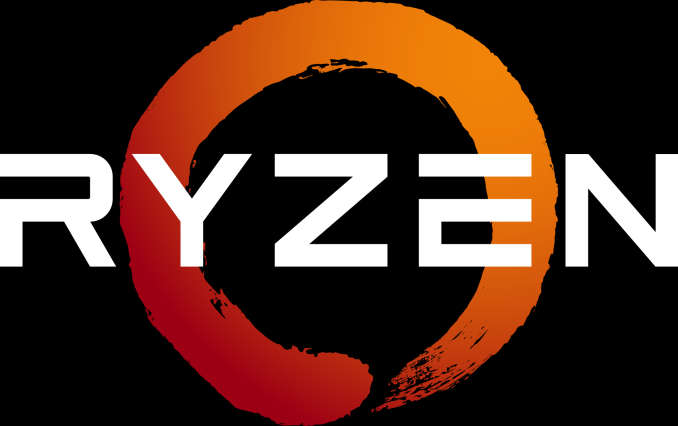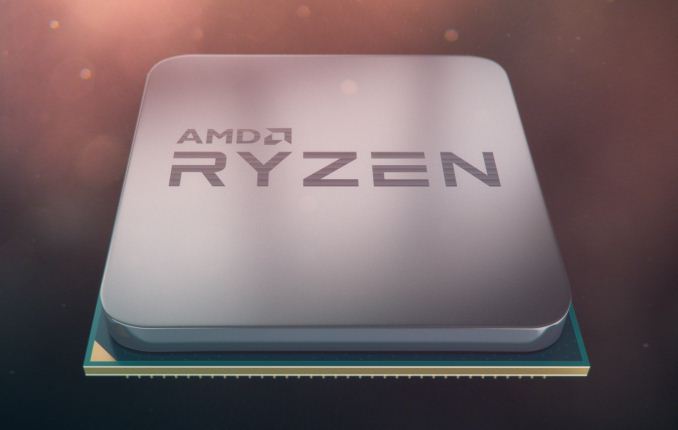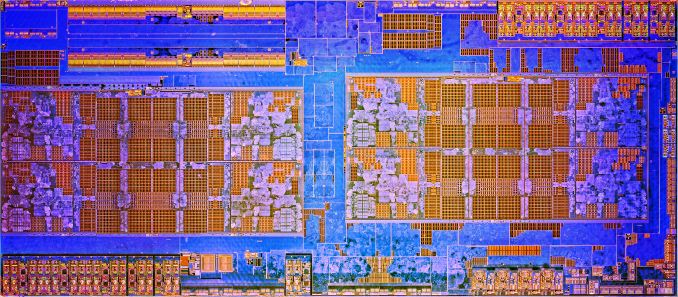AMD Launches Ryzen: 52% More IPC, Eight Cores for Under $330, Pre-order Today, On Sale March 2nd
by Ian Cutress on February 22, 2017 9:00 AM EST
The biggest x86 launch for AMD in five years is today: Ryzen is here. As always before a major launch, AMD gives a ‘Tech Day’ for relevant press and analysts, and through this event AMD’s CEO, Dr. Lisa Su lifted the lid on one of the most anticipated products in the semiconductor industry. AMD knows how to control the level of enthusiasm for its fans, and today is the end result, with processors going on pre-order from major retailers today at 1pm EST, ready for a general hard launch on March 2nd.
In a similar vein to launches of recent smartphones, AMD is doing a staggered announcement/launch with the products on their new microarchitecture. Where Samsung/Apple might give all the details for a product a few weeks before it’s available to buy, today on February 22nd marks the day where AMD is giving consumers information about Ryzen, and specifically the Ryzen 7 family of eight-core products. All the information today is from AMD, and AMD’s internal testing, and pre-orders also start from today for users ready to put down their money for a launch day part. Reviews of the CPUs, as well as when the CPUs will ship to customers, is on March 2nd. This also happens to be right in the middle of two annual shows, Game Developer Conference (GDC) and Mobile World Congress (MWC), making the time between receiving pre-launch samples and being able to provide independent verification of AMD’s performance claims relatively frantic. We’ll do our best!
The Ryzen Family
With a new processor launch, naming the parts and positioning them within the market is critical. So with Ryzen, the processor stack will be split into three based on performance and price: Ryzen 7 at the high end, Ryzen 5 in the middle, and Ryzen 3 for more price-conscious consumers. Both Ryzen 5 and Ryzen 3 are set to be launched later, and Ryzen 7 is the first portion of the family to be released.
Ryzen 7 will have three CPUs to start, all having eight cores and supporting simultaneous multi-threading:
- Ryzen 7 1800X: 8C/16T, 3.6 GHz base, 4.0 GHz turbo, 95W, $499
- Ryzen 7 1700X: 8C/16T, 3.4 GHz base, 3.8 GHz turbo, 95W, $399
- Ryzen 7 1700: 8C/16T, 3.0 GHz base, 3.7 GHz turbo, $329
Ryzen 7 1800X will be the high-end part, featuring a base clock of 3.6 GHz and a turbo of 4.0 GHz, within a TDP of 95W, and for $499. Next to this is Ryzen 7 1700X, launching at $399, with a base/turbo of 3.4/3.8 GHz. The final part for the launch is the Ryzen 7 1700, providing eight cores and sixteen threads for $329 at 3.0/3.7 GHz frequencies.
Processors will initially be available for pre-order from 185 retailers and OEMs worldwide, either as individual parts or pre-built systems.
What, not 40% IPC? 52% IPC??
Enthusiasts and analysts use the term IPC, or ‘Instructions Per Clock’, as a measure of how much the underlying microarchitecture improves from generation to generation. Two decades ago, a good design on a smaller node could net a healthy double-digit gain, whereas in recent years 5-10% gain has become the norm. When AMD initially announced that the new Zen microarchitecture they were developing was aiming for a 40% IPC gain, despite the low IPC they were starting from, users remained skeptical. AMD rehired Jim Keller to work alongside long-term AMD architect Mike Clark and produce a team with several goals in mind: high-performance x86, simultaneous multithreading, and a product to be relevant in the computing, PC, server and mobile space again. So despite this, 40% IPC always seemed a somewhat lofty goal, because Bulldozer was so underwhelming, and despite this low starting point. For the Ryzen launch today, AMD is stating that the final result of that goal is a 52% gain in IPC.
This is something we will need to test in due course!
The Ryzen Silicon, and the Future
AMD pointed out that the new 8-core silicon design runs 4.8 billion transistors and features 200m of wiring. Through previous announcements we’ve examined parts of the microarchitecture including cache sizes, threading, front-end/back-end design, and so on.
AMD Zen Microarchiture Part 2: Extracting Instruction-Level Parallelism
AMD Gives More Zen Details: Ryzen, 3.4 GHz+, NVMe, Neural Net Prediction, & 25 MHz Boost Steps
AMD’s CEO was keen to point out that this is a from-scratch design for AMD, using the knowledge gained from features developed for previous products but ultimately under the hood it looks like ‘a typical x86 high-performance core’, with AMD-specific features and tweaks. We were told that AMD’s roadmap extends into the multi-year range, so while the focus for 2017 will be on this family of products, back at HQ the next two generations are in various stages of development.
BENCHMARKS PLEASE
So despite the 82+ motherboards going to be available, 19 initial PC system builders moving into 200+ through the first half of 2017, the big question on everyone’s lips is how exactly does it perform?
Well, AMD gave us the following numbers:
AMD's benchmarks showed that the top Ryzen 7 1800X, compared to the 8-core Intel Core i7-6900K, both at out-of-the-box frequencies, gives an identical score on the single threaded test and a +9% in the multi-threaded test. AMD put this down to the way their multi-threading works over the Intel design. Also, the fact that the 1800X is half of the price of the i7-6900K.
In a similar vein, again with the Cinebench 15 multi-threaded test, the Ryzen 7 1700X scores over and above the Core i7-6800K (its price competition) and higher than the Core i7-6900K which costs 2.5 times as much.
We’ll tell you what our benchmarks say, with official retail processors. But you will have to wait until March 2nd. Sorry.





















386 Comments
View All Comments
MrBungle123 - Wednesday, February 22, 2017 - link
"Ryzen 7 at the high end, Ryzen 5 in the middle, and Ryzen 3 for more price-conscious consumers."I really wish AMD would come up with a naming scheme that wasn't a me-too knock off of intel's.
medi03 - Wednesday, February 22, 2017 - link
Why? So that it is harder for people to comprehend?BrokenCrayons - Wednesday, February 22, 2017 - link
Yeah, I noticed that too. The naming convention has an also-ran flavor that I don't personally find appealing. However, if you've ever listed to average people talk about computer processors after they've made a purchase, they usually discuss them in terms of Core i7, i5, i3, etc without regard for or understanding of the underlying technologies or the many iterations of processors that used that naming scheme. They also don't differentiate between dual core i7 laptop parts and quad core i7 desktop parts which are vastly different animals when it comes to performance. AMD might be a copycat with the naming convention, but they're following along after Intel in using a now broad, superficial understanding of relative processor performance.name99 - Wednesday, February 22, 2017 - link
It's an interesting psychological question.Suppose they instead did something like calling them
r11
r15
r19
Same idea, not obviously an Intel copy.
Does that give the impression that they are independent of Intel, or does it give the impression that they are well aware that they are copying, and trying to hide it? I honestly don't know.
Remember it's not like intel invented this scheme. They copied it from BMW (kinda sorta, though BMW and Intel are in strong competition for who can come up with the most incomprehensible and needlessly painful naming conventions...)
fanofanand - Thursday, February 23, 2017 - link
I actually thought the exact same thing when the I series first came out a decade ago (or 8 years whatever it is), in fact I wondered if they would make a m series be their top performer among each category, which they sort of kind of did with core M.BrokenCrayons - Friday, February 24, 2017 - link
I always thought of the i-Series naming convention as an Apple ripoff as it followed in the footsteps of the iPhone and iMac. When that was happening, iSomethings were everywhere in media and it was a little annoying.Michael Bay - Wednesday, February 22, 2017 - link
In this case it`s tradition, right back to K-ratings.MrBungle123 - Wednesday, February 22, 2017 - link
They were doing a me-too with the overclock-able APUs... stick a 'K' at the end of the number. I liked the "Black Edition" branding from older parts much better.fanofanand - Thursday, February 23, 2017 - link
Black SKUs matter! Seriously though I liked it a lot better too.Agent Smith - Wednesday, February 22, 2017 - link
UK price comparison for 8-coreIntel I7-6900K = £1,000
AMD R7-1800X = £430
I know which one any sensible person would go for.